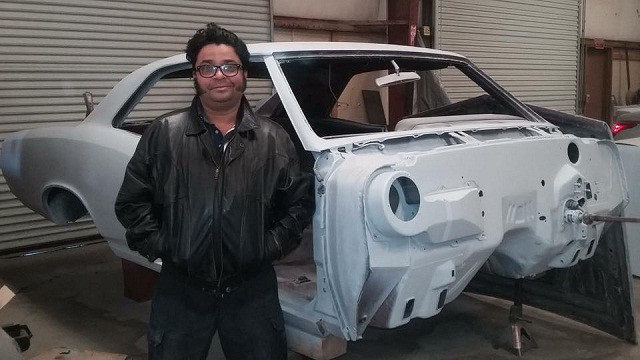Last Updated on January 7, 2023 by Leepu Da Maxim
A straight truck is considered to have a bucket or container attached directly to it. So, this container is attached to the frame and cannot be removed. On the other hand, the pup truck has a trailer or container that is not attached to the vehicle. So, it is possible to remove this structure.
Key Takeaways
- Usually, a pup truck is 19.8 feet long therefore it is very difficult to drive this type of truck in the city
- The maintenance and operating cost of a pup truck is higher compared to a straight truck
- With a pup truck, you can carry different types of loads but with a straight truck you can only carry light loads
Pup Trucks And Straight Trucks – Main Features
| Features | Pup Truck | Straight Truck |
| Maneuverability | They can be difficult to maneuver in a city due to their length | They are usually easy to drive and do not require many skills |
| Operational Costs | Both maintenance and operating costs are high | Costs are low because it is a smaller vehicle compared to other trucks |
| Maximum Weight Total | It can reach up to 80,000 pounds | Can be up to 33,000 pounds |
| Versatility | Little versatility when driving on different roads | Greater versatility when driving in a city or on different roads |
| Types Of Freights | It is possible to transport different types of loads, even very heavy ones | Mostly efficient for light or light loads |
What Is The Difference Between A Pup Truck And A Straight Truck?
In principle, it is necessary to consider that a straight truck is very different from other types of trucks that have a container in the rear. In fact, in all cases, a straight truck is not as big as other trucks. Of course, a cargo box is incorporated so that the truck can transport numerous items.
Beyond that, the cargo box included in this vehicle is completely attached to the truck. So, it cannot be removed from it at all. Here, the solid frame is rationed from the front to the rear of the vehicle. Both the truck and the cargo box at the rear are attached to this solid frame.
Thus these trucks are also known as box trucks or rolling toasters. In particular, these vehicles always have the shape of a bucket to avoid a decrease in driving comfort. So, we must mention the main differences between the pup truck and the straight truck.
One of the main differences between these types of vehicles is probably the appearance of each one. Generally, the pup truck is much longer compared to a straight truck. Here, the trailer of the first truck can be removed without any problem. In contrast, the transport box of the first truck is always attached to the vehicle.
Specific Characteristics Of The Straight Truck
As mentioned, users will notice that a straight truck usually has a rectangular or cuboid shape. This is why they are usually smaller vehicles compared to a pup truck. In principle, the vehicle’s cabin is usually separated from the rectangular box. Beyond that, some differences need to be considered.
1. Maximum Total Weight: Here, the maximum total weight can vary depending on the specific size of each straight truck. However, in most cases, this maximum total weight can be as much as 33,000 pounds. This also makes a big difference when you have a certain payload on your vehicle.
2. No Fifth Wheel: When trucks are larger, they include more wheels in an emergency or depending on the transport load. When the transport load is too heavy a truck requires more wheels to distribute the weight of the load more evenly. Beyond that, these trucks do not include a fifth wheel for which the payload capacity is lower.
3. Maximum Height: This is another specific feature that is usually shared by most medium to large trucks. Generally, the maximum height that straight trucks share is 14 feet. So, this allows them to be more versatile in operation on different bridges and in different cities. Larger trucks that have more height should opt for other routes.
4. Operation And Maintenance Costs: Of course, the maintenance and operating costs of using these vehicles are also important. If the operation and maintenance costs were the same, then larger trucks would probably be used. However, the advantage here is that a straight truck requires less operation and maintenance costs to operate.
5. Greater Maneuverability: Especially since it is a smaller vehicle compared to pup trucks, these vehicles may offer some driving advantages. One of the main advantages, in this case, is the ability to stop more times. This is why a straight truck is often used for the delivery of many products.
Specific Characteristics Of the Pup Truck
As we have mentioned before, this type of truck has a transport box that is not attached to the vehicle. Specifically, the compartment located in the rear is not attached to the truck’s frame. Therefore, any trailer does not have a front axle since one of these trucks is required to transport the cargo.
Instead, a detachable front axle is usually available here. Thus, most of the trailer weight is supported by a dolly or a truck. Additionally, many differences can be found between these trucks and straight trucks. So, we can list these characteristics to better understand this vehicle.
1. Similar Names: When talking about a pup truck we can also mention what has other similar names such as trailer tractor. So, this is a big truck that is also called a semi-trailer or 18-wheeler truck. All of these names refer to this type of vehicle which is one of the largest on the road.
2. Maximum Total Weight: In this case, the maximum total weight is much higher compared to a straight truck. Since it is a much larger vehicle, the payload capacity is higher. In general, the maximum total weight can reach 80,000 pounds. Of course, depending on each case, special permits are required for extended widths and lengths.
3. Fifth Wheel: Here, the maximum total weight is much higher than straight trucks. This is why a greater number of wheels are incorporated in total. Here, the fifth wheel allows the rest of the tires to carry a more balanced weight. So, the total weight of the transport load is distributed over a larger number of tires to avoid any inconvenience during transport.
4. Similar Maximum Height: In particular, the maximum height is usually not much higher compared to a straight truck. Of course, they are much longer and wider vehicles compared to a straight trucks. Beyond that, the maximum height can be up to 13 feet 6 inches. So, it’s a similar height that allows drivers to move through special roads.
5. Operation And Maintenance Costs: Again, we must mention that there are certain maintenance and operation costs to use this vehicle. So, since it is a larger vehicle than a straight truck, the costs are higher. In particular, more money is required for the maintenance and operation of these trucks compared to a straight truck.
6. More Trailers For Long-Distance Trips: Drivers need some conveniences when they have to make long-distance trips that can last a whole day. So, it is not uncommon for bunks to be built into these trucks. This way, drivers who have to make a long journey can enjoy some comforts.
Do I Need A CDL To Drive A Straight Truck?
As with some similar vehicles you need a commercial driver’s license to drive this vehicle. If a straight truck has a GVWR with a minimum of 26001 pounds or more, then a CDL is needed to drive it. Beyond that, it is necessary to mention that most straight trucks have a GVWR that is less than 26,001 pounds.
In these cases, a commercial driver’s license is not required for driving. However, when the value is 26001 pounds or more a CDL Class B license is required. Even this type of license is also needed to drive other vehicles of considerable size:
1. Dump Trucks with Trailer
2. Large buses
3. Straight and box trucks
So, if the straight truck you’re driving has a gross weight of fewer than 26,001 pounds, you should get rid of the commercial driver’s license. Anyway, it is always really convenient to check the gross weight of the straight truck before relying too much on it.
Why Are Straight Trucks Popular?
Nowadays, more and more companies decide to opt for this type of truck for different activities. These truck drivers can avoid the need to obtain a Class A commercial driver’s license. Along with this, the benefits that these trucks can provide are varied and explain their popularity.
1. No Need For CDL: As we have mentioned, when the gross weight of a straight truck is less than 26,001 pounds, a commercial driver’s license is not required. In some cases, a Class B driver’s license is required.
2. More Productivity: Many of the drivers who must drive these vehicles can enjoy a better, more productive work environment. The relationship between the company and the customers is superior because the drivers always deal with the same customers.
3. Higher Wages: Drivers of straight trucks often enjoy good working hours with few hours and good wages. According to some companies, these wages can increase to $50,000 which is excellent for many drivers.
4. Hourly Pay: Some truck drivers are only paid for the number of miles they drive. In contrast, straight truck drivers are paid by the hour. So, traffic jams or vehicle breakdowns are not a problem that allows them to lose money.
References:
https://www.thetruckersreport.com/truckingindustryforum/threads/straights-vs-tractor-and-pup.264135/
https://talk.newagtalk.com/forums/thread-view.asp?tid=97050&DisplayType=flat

Hi, I’m Leepu Da Maxim , a dedicated car enthusiast with over 10 years of experience in this field, and I’m thrilled to share my passion and expertise with fellow car enthusiasts like you. My journey began in my hometown West Jordan, Utah, where my fascination with the mechanics and design of cars sparked at a young age. Over the years, this passion has evolved into a commitment to providing accurate, insightful, and engaging information about all things automotive through CarsAmazing .

